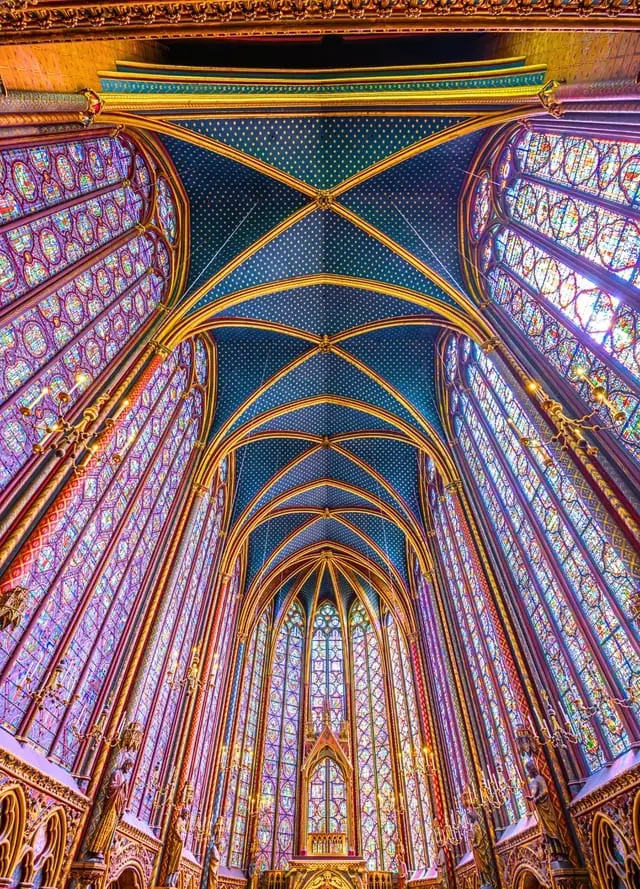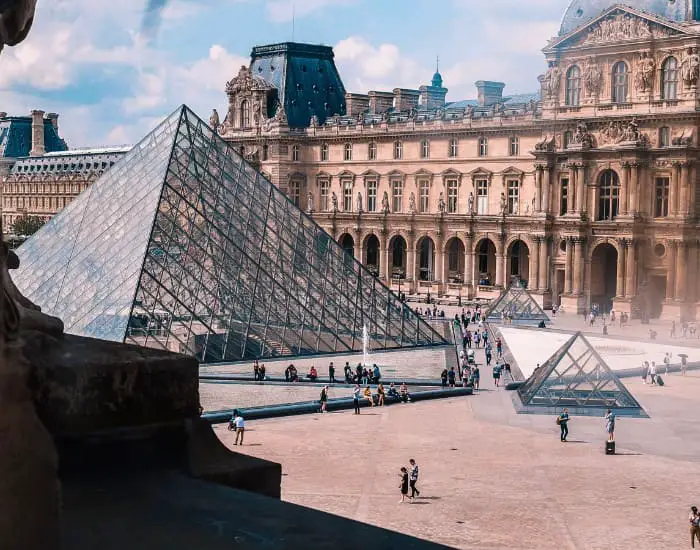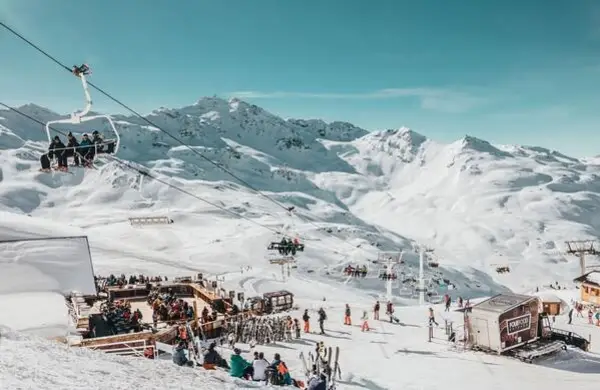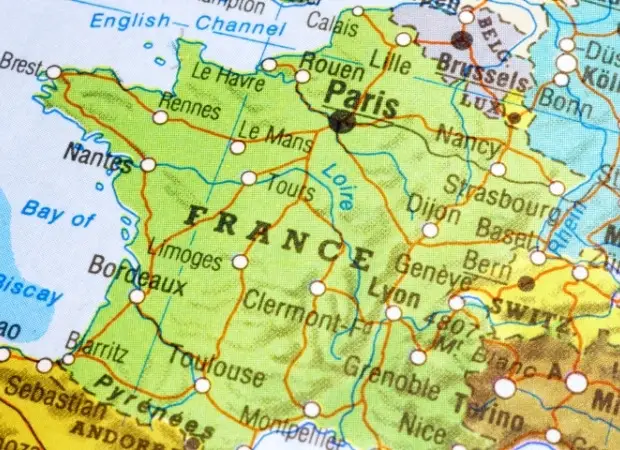You don’t want to just settle down for the holidays? How about a road trip to discover France? Here are our visits and points of interest suggestions for a colorful trip from Paris to Nice. Whether or not you include all of these stops in your trip is up to you: as long as you’re satisfied with them, the journey and the memories are yours to make!
Suggested length: 4 to 15 days
Total distance: roughly 1,500 kilometers
Overview of the trip :
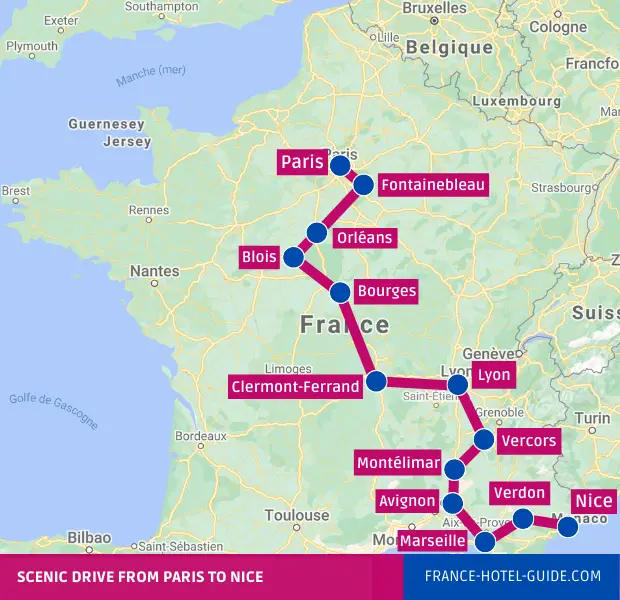
To visit on your way:
1. Paris: the great centers of interest

Paris is a city so filled with interesting places it would deserve a complete stay of its own.
Thanks to all of its cultural places, tourist attractions and interesting remote corners, you will be able to start off your trip with a fully personalized visiting list.
For a day or two, here are a few ideas to properly begin your stay in France:
- Visiting the Eiffel Tower
- Visiting the Sacré-Coeur basilica
- Window shopping in the Champs-Elysées
- Tourist cruising on the Seine river
- Visiting the Louvre museum
- Visiting the Panthéon and the Latin district
2. Fontainebleau: the castle, the park and the forest
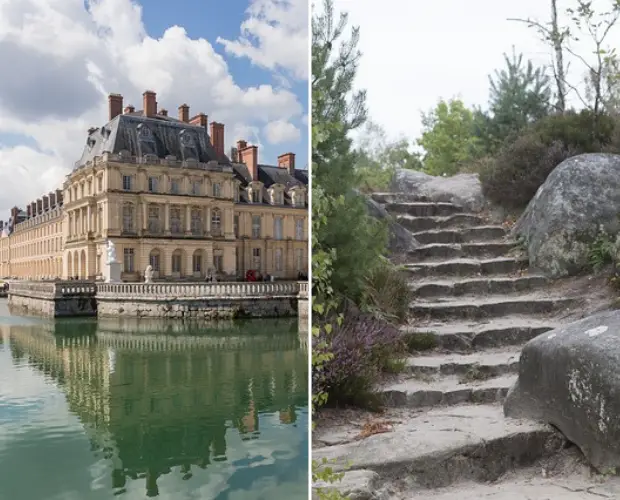
The castle of Fontainebleau, which is particularly noticeable for its “horseshoe staircase”, was once nicknamed “the house of centuries” by Napoleon himself.
With its imposing and sumptuous Renaissance architectural style and its vast 115ha park, it can offer both a cultural visit and a peaceful and invigorating walk.
For nature lovers, we also recommend the immense forest circling the city, which is as a natural reserve for several animal species.
Walking paths are numerous and varied, and it can quickly morph into a giant open-air playground for the youngest.
3. Orléans: the house of Joan of Arc, the celebrations and the Sainte-Croix cathedral
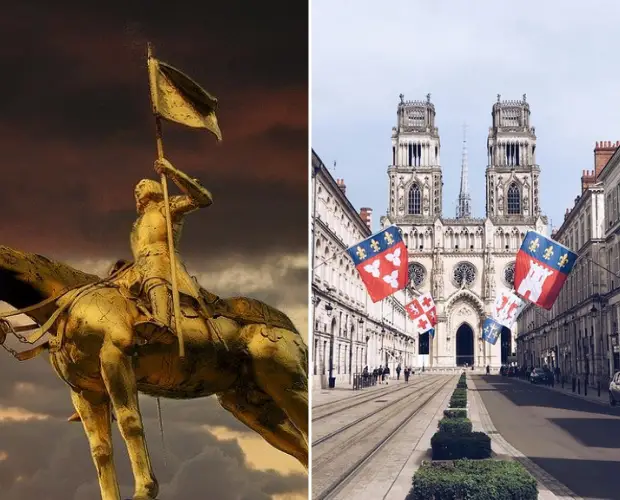
Stopping by Orléans means preparing yourself for an intensive medieval history lesson.
This city is indeed very proud of its heritage, and particularly of its ties to Joan of Arc, who helped free it during the Hundred-Year War in the 14th and 15th centuries.
To learn more about her, you can visit the house which she is said to have stayed in, and which is now a museum.
Fun fact: in early May, the city organizes celebrations dedicated to Joan of Arc, which include parades, light and sound shows and historical reenactments.
From the architectural side of things, you can also visit the imposing Sainte-Croix cathedral, whose impressive Gothic style renders simply impossible to miss.
4. Blois: the castle, the gardens and the museums
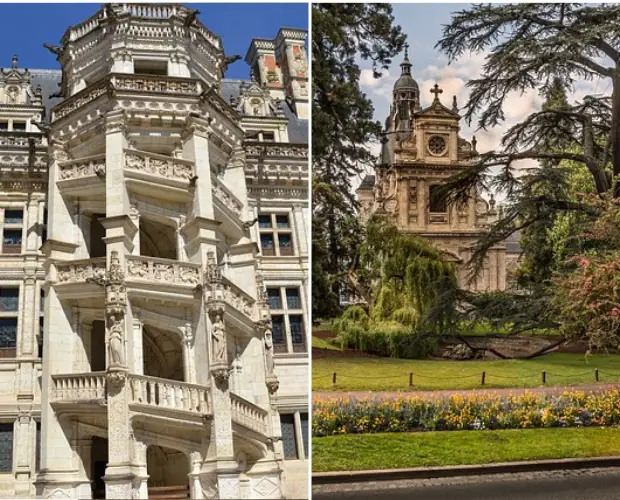
If you want a more extensive history lesson, don’t miss Blois and go visit its medieval castle, which will appeal to children and adults alike.
Mostly famous for its “monumental” spiral staircase, this huge castle has more to it and has everything needed to enthrall its visitors.
Blois also has several museums worth visiting, including the Fine Arts Museum, the Fondation du Doute for modern art, the Maison de la Magie for illusions and stage magic, and several others.
And if you’d rather take a relaxing stroll, the Jardin des Lices and Jardin de l’Evêché will freely welcome you.
5. Bourges: the Jacques-Coeur palace, the cathedral, the swamps and the “Printemps”
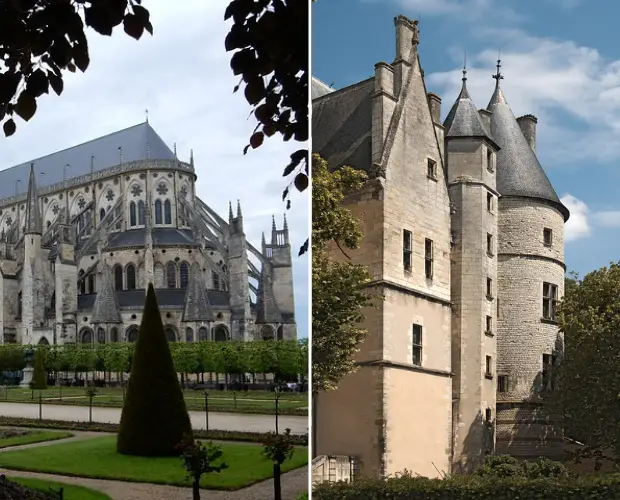
Located near the geographical center of France, Bourges also has its share of great cultural places. The Jacques-Coeur palace, which dates back to the 15th century, is the one gothic civil building not to be missed. As for the huge Saint-Etienne cathedral, it was registered at the UN World Heritage in 2009.
Those who wish to find a bit of nature may appreciate a stroll through the swamps of the Yèvre and the Voiselle. And for the energetic ones, the musical festival known as the Printemps de Bourges takes place every year in April.
6. Clermont-Ferrand: the religious buildings, the old center and the Volcans d’Auvergne
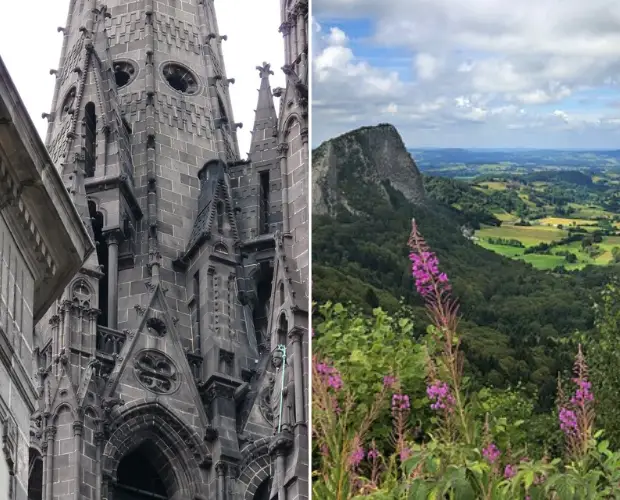
Clermont-Ferrand, located at the heart of the Massif Central mountain range, also has its own set of buildings, usually religious in some way, all impressive and typical of their region.
Between the Notre-Dame-de-l’Assomption Cathedral, the Notre-Dame-du-Port basilica, the many churches and chapels, and the historical district of Montferrand, its fountains, hotels, and squares, it’s hard to know what to look out for!
The natural regional park of the Volcans d’Auvergne is also near the city.
While this volcano range may have been extinct for thousands of years, it is still a show of majestic landscapes and exceptional viewpoints.
7. Lyon: the old center, the peninsula and the Tête d’Or park
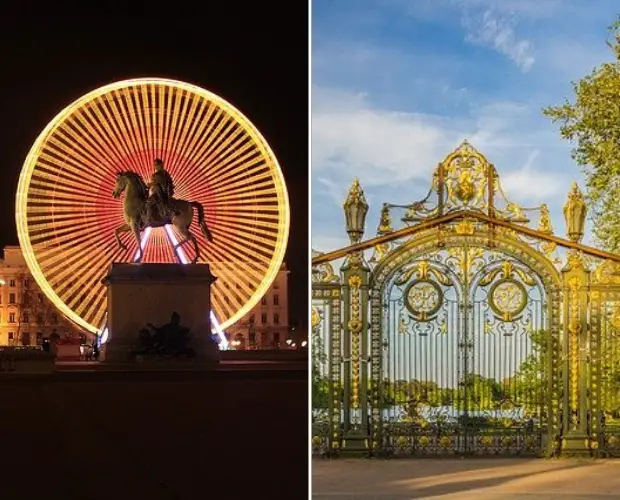
The old Lyon managed to retain a typical ancient charm, thanks notably to its “traboules”, very narrow alleyways winding between buildings, and its paved streets, over which towers the Saint-Jean-Baptiste cathedral near the Rhône, as well as the Fourvière basilica on top of the hill.
The peninsula is also attractive, especially due to the great Place Bellecour and the big, old buildings it leads to.
North of the city, the Tête d’Or park makes not only for a refreshing walk in the middle of the city but also offers an impressive zoo and several botanical gardens.
8. The Vercors mountain range: the landscapes and the towns
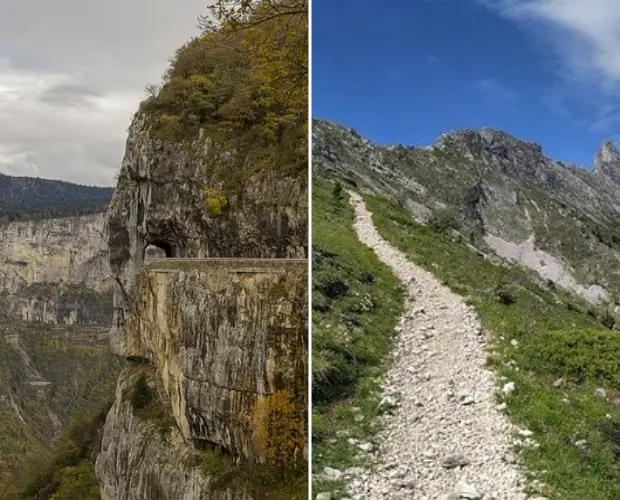
French mountains often make for wonderful backgrounds during a road trip, and the Vercors range is no exception.
The winding roads along the cliffs often have incredible views to offer, and it isn’t all that rare to stop on the side to take a picture, explore the surrounding caves or summits, or even enjoy a via ferrata and paragliding.
Aside from the landscapes, the little towns all across the Vercors are also worth the visit. The stone houses and bridges over the streams clearly indicate a transition towards southern France.
9. Montélimar: nougat and the castle
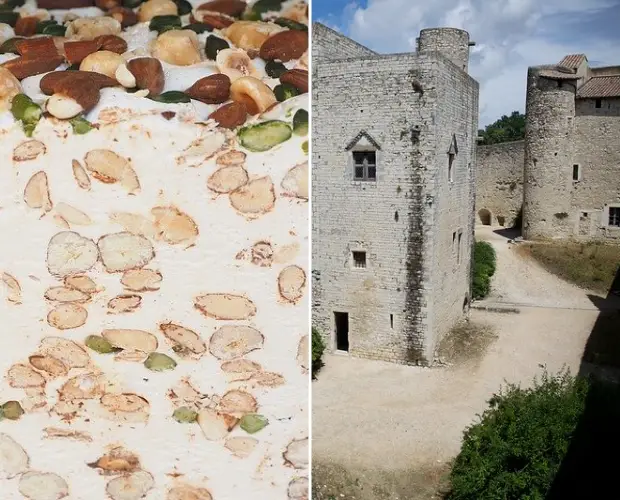
After driving so many miles already, a sweet little break in Montélimar seems to be in order. The Palais des Bonbons, du Nougat et des Souvenirs (“palace of candies, nougat and memories”) has its doors open wide for you to come discover not only how nougat, the city’s specialty, is made, but also how many other candies are prepared, which will definitely bring back some sweet childhood memories.
Those less interested in food can also enjoy a bit of culture and history instead: the castle of the Adhémar offers an unrivaled view over the valley, and also houses a contemporary art center.
10. Avignon: the Palace of the Popes and the half-bridge
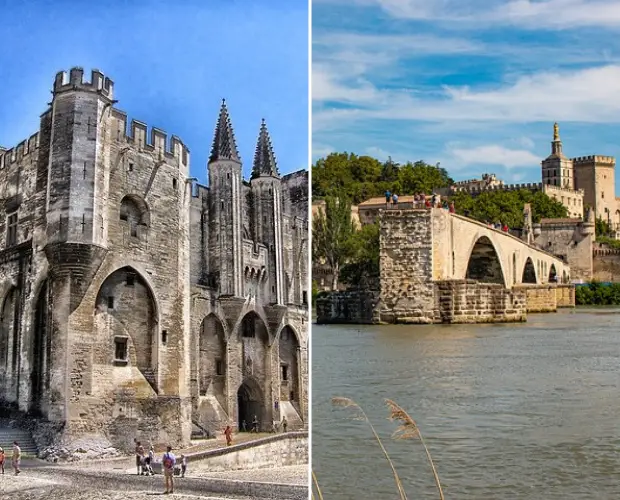
In some places, Avignon looks like it is still frozen in time. The palace, which was home to popes during the whole 14th century, is definitely no stranger to that, as its height and presence make it a must for every visitor.
However, the towers peppering the city, as well as the old battlements surrounding it, also act as reminders of its fortified past.
As for the Pont d’Avignon, which inspired a famous French children song, it is actually an unfinished half-bridge crossing the Rhône river, which can either be visited from up close or simply be admired from afar.
11. Marseille: the old port, the basilica and the “calanques”
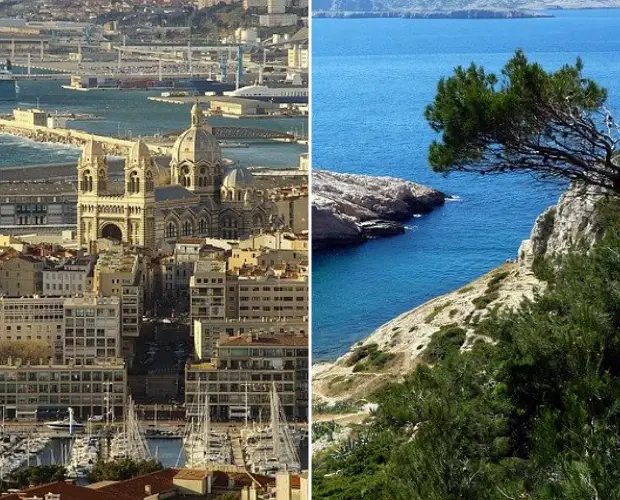
As the second-largest French city, Marseille naturally has much to offer, but the old port truly is the place not to miss for a big breath of fresh marine air.
The whole site, overlooked by the beautiful Notre-Dame-de-la-Garde basilica, makes for a typical Mediterranean view.
If you feel like picnicking next to the sea while enjoying breathtaking views, you may stop to have a walk in the Calanques national park, located between Marseille and La Ciotat.
Whether it is the sea, land or sky, the numerous hiking trails along the cliffs offer stunning half-desertic, half-marine deserts, even only for one afternoon.
12. The Verdon: the landscapes of the gorges
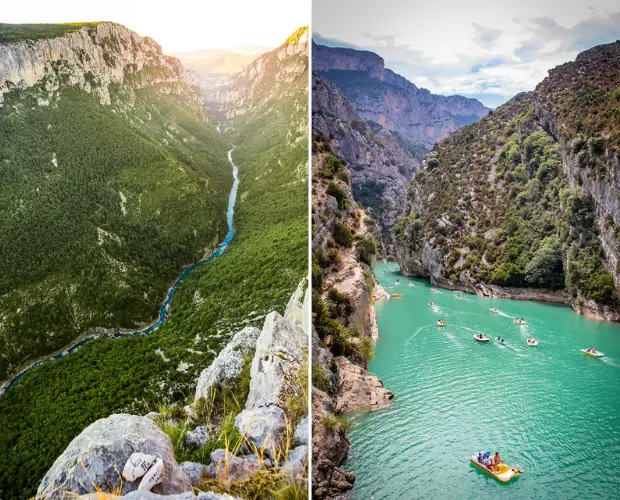
The Verdon regional natural park was defined around the eponymous gorges, which make a beautiful harmony between the blue river, the white rocks and the green forests surrounding it.
Those who like to hike, walk or raft can find all of these activities available to them, in order to see the park from a new perspective, by walking around the beaten paths or (carefully!) exploring the numerous caves.
13. Nice: Saint-Paul-de-Vence and the Promenade des Anglais
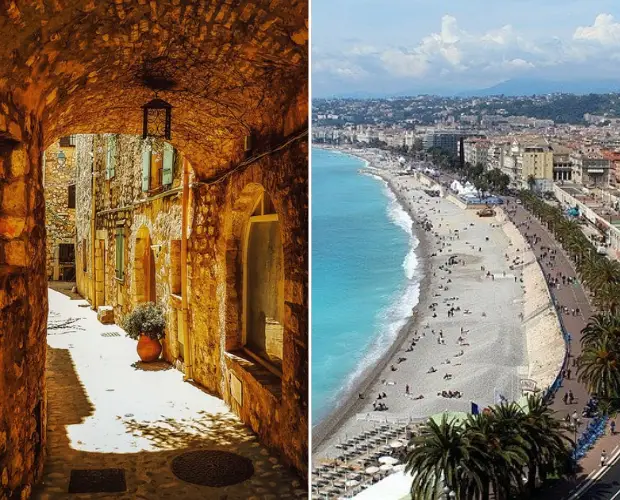
Located on the high hills near the Mediterranean sea, the town of Saint-Paul-de-Vence is the textbook definition of “picturesque”. As a proud town of artists, the paved alleyways go winding between the stone houses and workshops.
Finally, to finish your road trip, head to Nice to find the sea, the strand, and the Promenade des Anglais (literally the “walkway of the English”) for two kilometers of sunny delight.
Whether you wish to admire all the luxurious hotels, dive into the sea to freshen up, or just generally enjoy the sun and the palm trees, the great avenue is open to everyone at all hours of day or night.
I aim to share my tips and recommendations for the beautiful country of France. My goal is to help you plan your next adventure, whether it’s a weekend getaway or a once-in-a-lifetime trip. From finding the best hotels and restaurants, to discovering unique activities and sights, I’ve got you covered!

